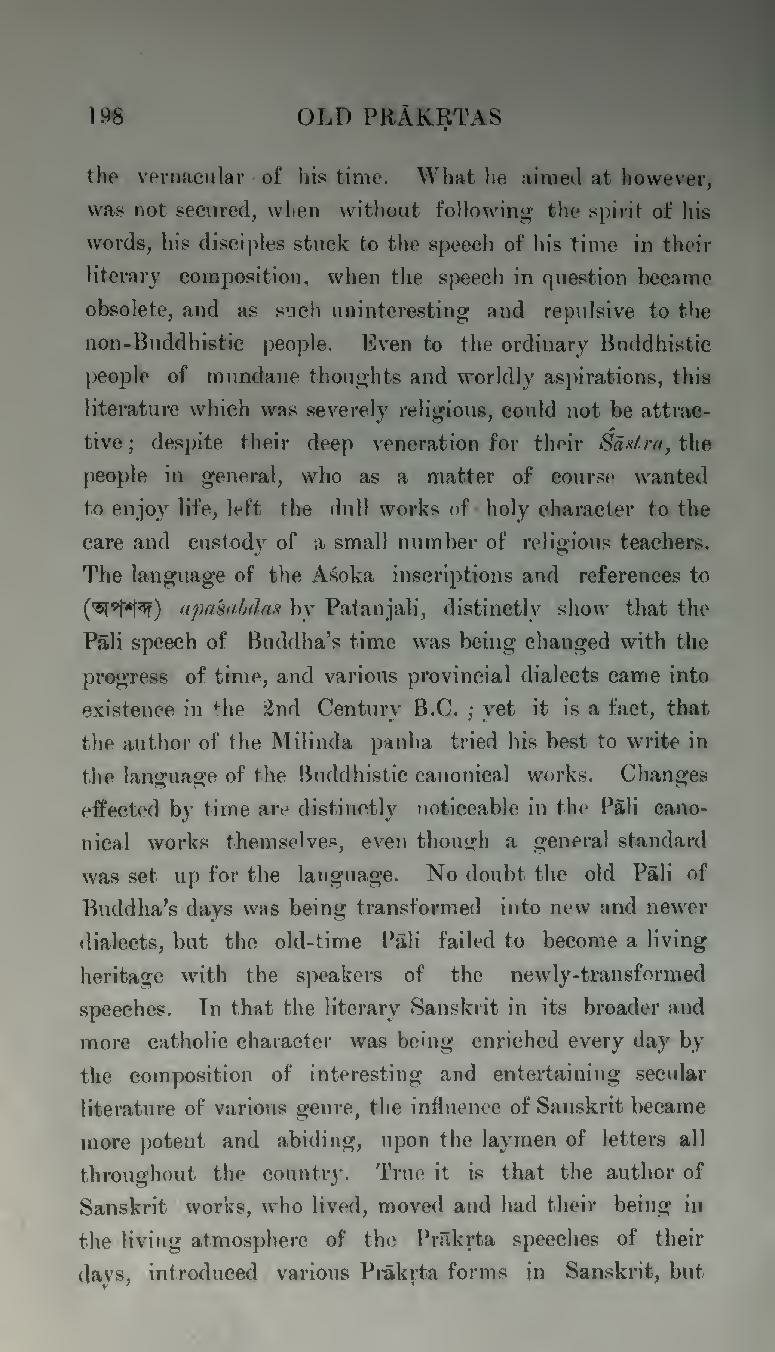the vernacular of his time. What he aimed at however, was not secured, when without following the spirit of his words, his disciples stuck to the speech of his time in their literary composition, when the speech in question became obsolete, and as such uninteresting and repulsive to the non-Buddhistic people. Even to the ordinary Buddhistic people of mundane thoughts and worldly aspirations, this literature which was severely religious, could not be attractive; despite their deep veneration for their Śāstra, the people in general, who as a matter of course wanted to enjoy life, left the dull works of holy character to the care and custody of a small number of religious teachers. The language of the Aśoka inscriptions and references to (অপশব্দ) apaśabdas by Patanjali, distinctly show that the Pāli speech of Buddha's time was being changed with the progress of time, and various provincial dialects came into existence in the 2nd Century B.C.; yet it is a fact, that the author of the Milinda panha tried his best to write in the language of the Buddhistic canonical works. Changes effected by time are distinctly noticeable in the Pāli canonical works themselves, even though a general standard was set up for the language. No doubt the old Pāli of Buddha's days was being transformed into new and newer dialects, but the old-time Pāli failed to become a living heritage with the speakers of the newly-transformed speeches. In that the literary Sanskrit in its broader and more catholic character was being enriched every day by the composition of interesting and entertaining secular literature of various genre, the influence of Sanskrit became more potent and abiding, upon the laymen of letters all throughout the country. True it is that the author of Sanskrit works, who lived, moved and had their being in the living atmosphere of the Prākṛta speeches of their days, introduced various Prākṛta forms in Sanskrit, but
